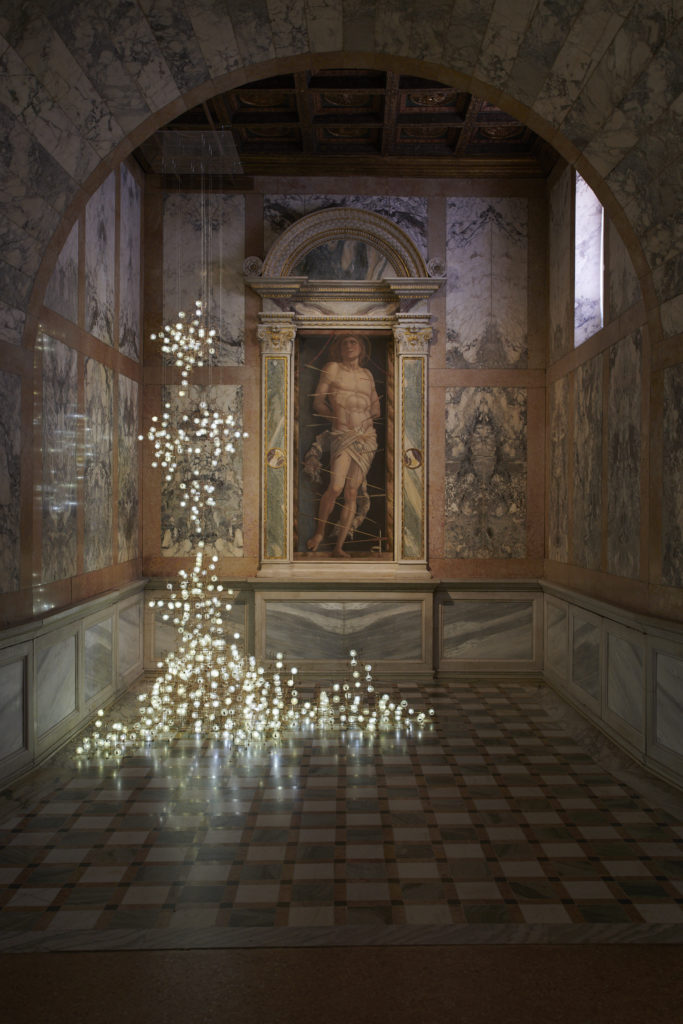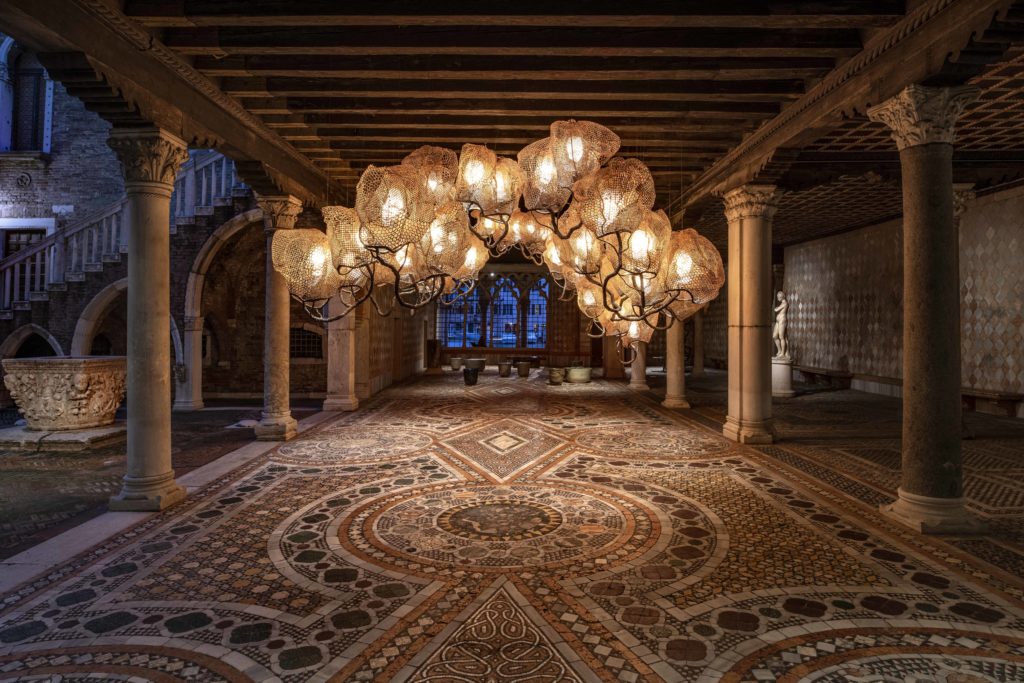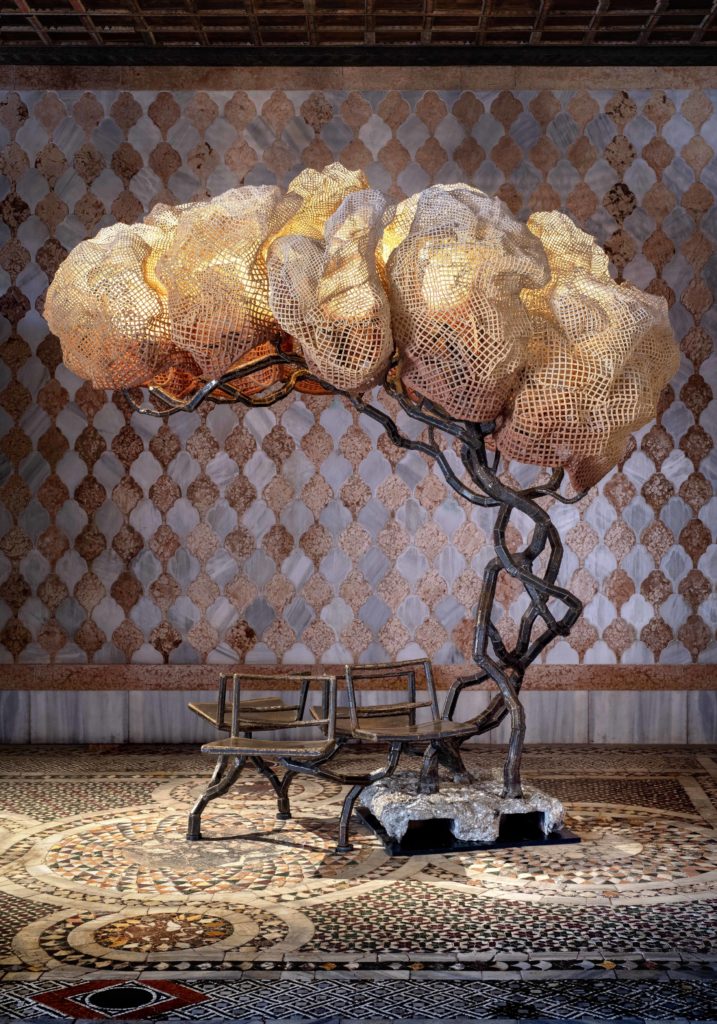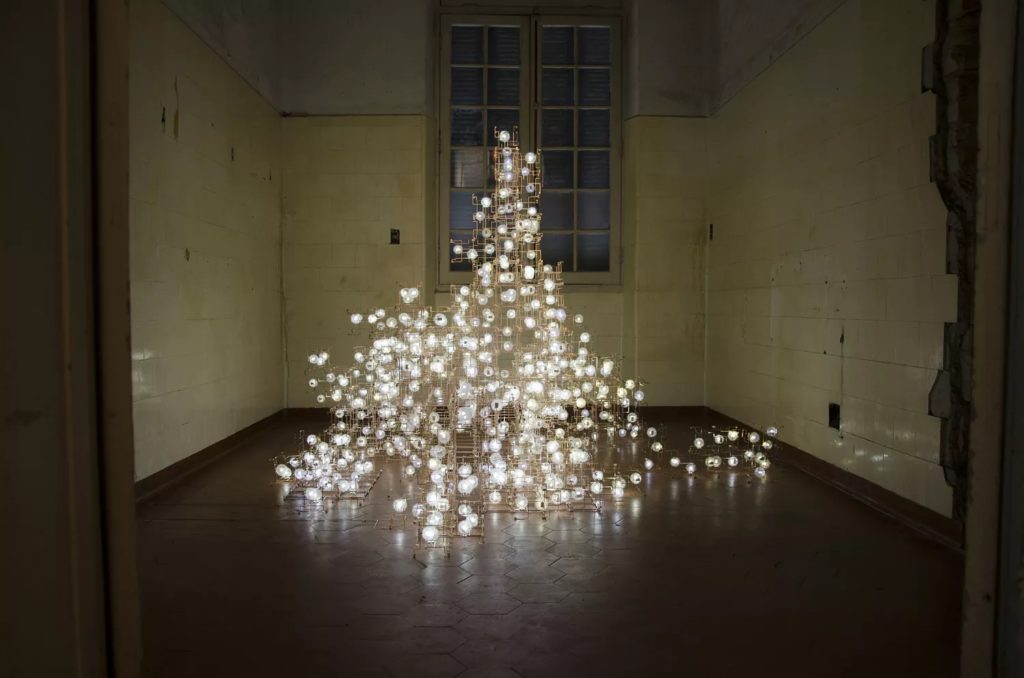On View
Three Artists and Designers Tell Us What Carpenters Workshop Gallery’s ‘DYSFUNCTIONAL’ Exhibition Means to Them
Nacho Carbonell, Studio Drift, and Michèle Lamy open up about their projects, currently on view at the Ca'd'Oro in Venice.

Nacho Carbonell, Studio Drift, and Michèle Lamy open up about their projects, currently on view at the Ca'd'Oro in Venice.

In Partnership with Lombard Odier

In the early 20th century, the renowned architect and Modernist pioneer Louis Sullivan spoke the now famous words, “form follows function,” an axiom that came to define many of the industrial and decorative design objects that are still made today. Carpenters Workshop Gallery’s new exhibit in Venice, in partnership with Lombard Odier, aims to upend that stale convention with ‘DYSFUNCTIONAL,’ a group exhibition on view in the Ca’ d’Oro, a resplendent palace on the Grand Canal.
The 22 international artists participating in the exhibition each have unique approaches to their boundary-blurring creations, with individual hopes to erase the constrictions that delineate art and design.
We spoke to a handful of them—Studio Drift, the Amsterdam-based design firm founded by Ralph Nauta and Lonneke Gordijn; the Algerian-born artist Michèle Lamy, whose husband, fashion designer Rick Owens, is also included in the exhibition; and the Spanish-born designer Nacho Carbonell—to elaborate on what the exhibition’s themes mean to them.

Nacho Carbonell, Inside a Forest Cloud Chandelier (2019). Photo: by Alex Grazioli, Courtesy of Carpenters Workshop Gallery.
How did you get involved in this project? Why does the theme appeal to you?
For the last few years, we have worked with Carpenter’s Workshop Gallery and have developed organically a unique way of working with a mutual understanding. For over a year, we considered the Ca’ d’Oro and the possibilities that this magnificent location could offer us, knowing that we wanted to create a unique experience for the visitor, where the past, present, and future of creativity meet, balance, and make us reflect.
‘DYSFUNCTIONAL’ makes us reflect on the idea of borders that we sometimes give to ourselves, and how being open to understanding our surroundings can make us more tolerant and more free to approach things from an emotional perspective, rather than from the rational definition of what had been defined before.

Nacho Carbonell, Under a Light Tree (2019). Photo: by Alex Grazioli, Courtesy of Carpenters Workshop Gallery.
How does your particular work address the DYSFUNCTIONAL theme?
My work always tries to involve the viewer, the human figure as part of the object, and push beyond the aspect of a function. I’m trying to create an experience you can take with you. [I’m asking the] viewer [about] the relevance of the physical object, or the link you had created with it. This will make [you] think [about] what the real function of the object actually is. You can create something but the final function is given by those who use it, experience it, or see it.

Installation view of Studio Drift, Fragile Future 3 [detail] (2019). © Studio Drift.
We [Studio Drift founder Ralph Nauta and Lonneke Gordijn] have been working with [Carpenters Workshop Gallery founders] Julien Lombrail and Loic Le Gaillard since the start of our art studio, and we all share ideas on blurring the boundaries between art and design. Rather than seeing art as something that can only be contained within the four walls of a gallery, we see the world as an exhibition and nature as the purest form of art. With our Fragile Future light installation, we aim to re-establish the connection between humankind and earth.
What about the exhibition’s focus on the ideas of function and dysfunction in art and design interested you?
We’ve never created products that are purely functional. How we behave and make choices, what drives us, and why we feel certain things are very much reflected in everything around us. We are all part of the same evolution—technology, architecture, art, everything we develop, whether it succeeds or fails, exists in the same cycle, making something that we want to rise above ourselves. We believe that we can see ourselves in natural phenomena. We can tune into these surroundings and become part of the environment. In this way we are able to establish connections between man and environment that are more meaningful and it makes us aware of the role we can play, of the direction we are working towards and of the media we choose to work with.
How does your particular work address themes of the exhibition?
Fragile Future started as my [Lonneke’s] graduation project in 2005. As I said, I was never really interested in making functional objects. Moreover, I wanted to understand what level of awareness on humanity or the environment an object could raise. Fragile Future uses the fragility of dandelion seeds as a strength and poses its ability to make a meaningful connection with a completely different, human system. As I am extremely intrigued by everything that drives evolution, technological innovation and nature are a natural fit for me, when developing a perspective for our future.
The work is always site specific, and bringing Fragile Future and the masterwork of [Renaissance artist] Andrea Mantegna together means to me the starting point of bridging the gap between the moment where we started losing the connection and the moment we start seeking it again.
During the Renaissance people became aware that they could understand nature and have an influence on it. This new insight lead to tremendous technological developments but also directed humankind towards a belief that we can have total control over earth and our lives. For the last 500 years, we blocked out nature as a method to seek control. Now, more than ever we feel the need to get in line with our nature and our environment again.

Installation view of Michèle Lamy, LAMYLAND (2019). Photo: by Alex Grazioli, Courtesy of Carpenters Workshop Gallery.
How did you come to design a project for Carpenters Workshop Gallery’s exhibition?
I was invited by Carpenters Workshop Gallery to be part of this exhibition with my LAMYLAND What are We Fighting For? installation, which was previously created for my three-month residency at Selfridges last year. It is [in that way] a little different to the other artists’ work in the exhibition.
How did your contribution respond to the idea of dysfunction?
The idea was already in existence, but in fact it works very well within this theme. What are We Fighting For? is an exploration of the issues we all have to face right now, manifested in an installation of punching bags. In boxing, you have to look your opponent in the eye and there are rules. When you stand up for what you believe in in life, it’s the same: you need to be able to look your opponent in the eye and act according to a set of moral rules.
In boxing, you strive to be the best version of yourself both physically and mentally. This is also a good aspiration for life.
What does it mean to have your work shown while the Venice Biennale is opening?
For me, the important thing about showing work at this time is about [it’s] having a connection to the city.
To discover all of the artists participating in DYSFUNCTIONAL, explore the artists & exhibition here.